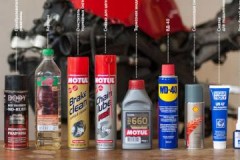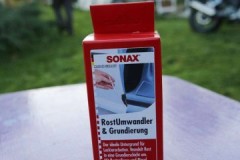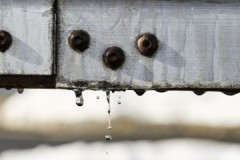DIY step-by-step instructions for making a rust converter
 Products called "Rust Converter" help to solve the problem of corrosion of metal products.
Products called "Rust Converter" help to solve the problem of corrosion of metal products.
Today, there is a wide range of such chemicals on sale. However, many people are interested in the issue of self-made anti-rust.
Having decided to use a homemade converter, you must follow the recipe and technology for its use. At the same time, it is worth remembering all the pros and cons of such a tool, as well as precautions for use.
How to make a rust converter with your own hands at home will be discussed in the article.
Content
Can I do it at home?
The purpose of any rust converter is to convert iron oxides into inert compounds that form a hydrophobic film on the metal surface.
In order to achieve this goal, manufacturers select a specific chemical composition. Each company has its own secret nuances, which it tries not to discloseso as not to provoke the creation of fakes.
In addition, the converter can include:
- tannins (convert iron oxides into neutral tannate complexes);
- zinc compounds (after reaction with phosphoric acid, forms a protective layer);
- corrosion inhibitors (form an additional film, slowing down the corrosion process).
At home, it is easy to find analogues of the main active ingredients and prepare a simple but effective converter. It is prepared from fewer components by conventional mixing in a container.
Pros and cons of homemade remedies
Self-made anti-rust tool has a number of advantages. However, it cannot completely replace professional converters. Due to the existing disadvantages, many users prefer ready-made store chemistry. For an objective assessment, it is necessary to consider both the pros and cons.
Homemade composition is prized for the fact that it:
 It is not toxic to humans, as it consists of harmless substances.
It is not toxic to humans, as it consists of harmless substances.- Does not require a very complex and lengthy manufacturing technology.
- It has simple and understandable instructions for use.
- Helps achieve rust removal and coating protection.
- It is much cheaper than branded counterparts.
The disadvantages of a home-made converter make its use limited and reduce its popularity among motorists, housewives and production foremen.
The weak points of the home corrosion modifier are:
- The need to find a convenient container and method of application.
- Can be used only for thin rust deposits.
- Lower efficiency compared to special equipment.
- The need to cover the product with paint or varnish.
How to make, what is included?
Any converter must contain two main substances that react and form a protective film on the metal surface.
Step-by-step manufacturing algorithm home converter is as follows:
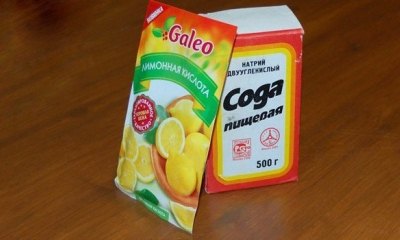 add 1.3-1.5 liters of citric acid to 1 liter of water;
add 1.3-1.5 liters of citric acid to 1 liter of water;- stir the solution to evenly distribute the acid;
- add 15 g of baking soda to the lemon liquid, mix;
- wait for the end of the chemical reaction (this is about 40 minutes);
- pour the converter into a convenient bottle for use.
Citric acid can be substituted for oxalic acid in the recipe. The technology for preparing anti-rust with this organic acid does not change.
How to use?
Considering the general recommendations for the use of rust modifiers, the features of the homemade product and its degree of activity, the instructions for use are as follows:
- The surface of the rusty metal is cleaned of dirt and dust; if necessary, use a detergent.
- If the corrosion layer is thick (more than 100 microns), remove it with sandpaper or a wire brush.
- Check the quality of the stripping by swiping over the processing area with your hand. If the surface is rough, touch up with sandpaper.
- A cloth or rag is abundantly moistened in the prepared converter and applied to the stripping site.
- Allow the solution to react for a quarter of an hour without lifting the moistened cloth from the treatment area.
- After complete drying, a primer is applied to the surface and covered with paint or varnish.
Precautions
Despite the low toxicity of the substances used in the recipe, it is necessary to remember the precautions when processing products. The solution should not come into contact with the mucous membranes and skin of the hands..
Therefore, rubber gloves must be worn when using the transducer. Cleaning is preferably carried out in the fresh air or in a ventilated area.
Additional Tips
The accumulated experience of users and the recommendations of specialists can help to cope with rust on metal products faster and better.
Using a home composition, it is worth remembering:
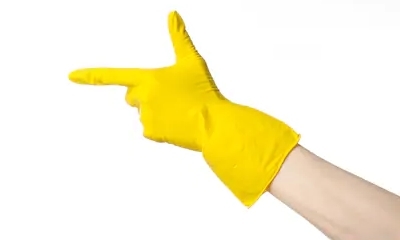 Depending on the degree of corrosion, it is advisable to use more powerful tools to remove rusty deposits: a grinder, sandblasting devices.
Depending on the degree of corrosion, it is advisable to use more powerful tools to remove rusty deposits: a grinder, sandblasting devices.- When using different methods of mechanical cleaning of rust, first coarse-grained samples are used, gradually switching to fine, fine-grained sandpaper.
- Before using the modifier, it must be shaken or mixed to create an even distribution of the active ingredients throughout the volume.
- The container in which the ingredients are mixed must be glass, enamel, ceramic. It is not recommended to use aluminum cookware.
- For convenient application of the product, you can use not only cloth napkins or rags, but also a spray bottle. It helps in cases where contact with the problem area is impossible.
- Each applied layer (anti-rust, primer) must dry well. Otherwise, it is washed off with a subsequent layer and becomes ineffective.
All the most important and useful information about rust converters can be found in this section.
Conclusion
If there is a desire to find a cheaper alternative to professional multicomponent rust converters, then a recipe for a homemade analog will help out.
Its preparation does not require a lot of time and deep knowledge of chemistry., and the application largely coincides with the standard scheme for using converters. To evaluate the effectiveness and durability of the result, it is worth testing the tool in practice.

